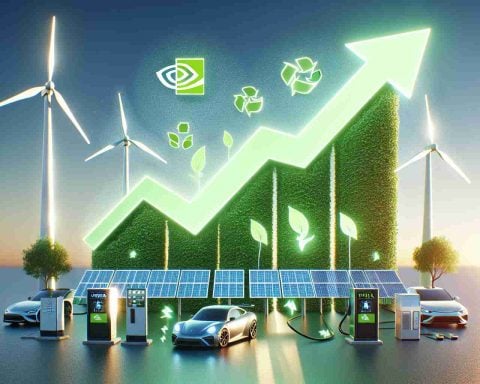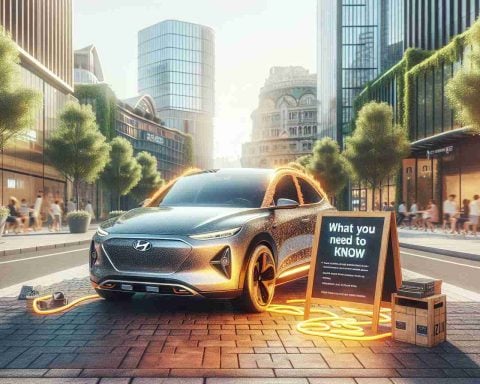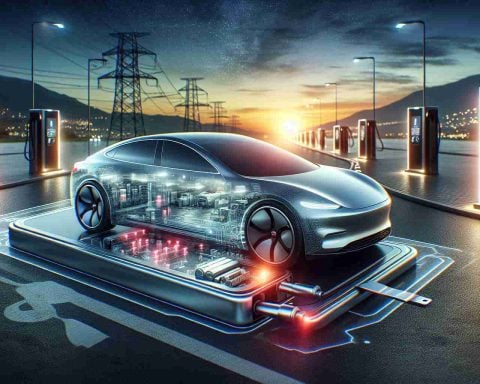- Electric vehicles are rapidly growing in popularity, but their lithium-ion batteries pose significant fire risks due to thermal runaway.
- EV fires can reach extreme temperatures, up to 1,200 degrees Celsius, making them more dangerous than fires in traditional cars.
- Recent incidents involving defective EV batteries have led to costly fires, highlighting the need for effective prevention and management strategies.
- Despite the potential severity of EV fires, studies indicate that EVs catch fire less frequently than gasoline-powered vehicles.
- The industry must focus on balancing innovation with safety to ensure a secure transition to electric transportation.
Electric vehicles are hailed as the future of transportation, but they come with a hidden peril that has the industry on high alert: the ferocious fires linked to lithium-ion batteries. As these high-tech power sources become more prevalent, the motor industry is scrambling to address the unique dangers they pose. Allianz UK is sounding the alarm, urging motor traders to remain vigilant as these volatile batteries continue to power more cars on the roads.
The villain in this fiery tale is the lithium-ion battery’s propensity for thermal runaway—a dangerous chain reaction caused by damage or improper handling. At its peak, an EV fire can sear through surroundings at a blistering 1,200 degrees Celsius, far hotter than traditional cars. Though the likelihood of such a blaze is relatively low, when it does happen, it’s nothing short of catastrophic.
Recent explosive episodes have spotlighted the risks. Faulty EV batteries awaiting return to manufacturers were the culprits behind two massive fires at motor trade premises, incurring eye-watering claims of £5 million and £1.5 million. Such incidents drive home the critical need for robust prevention and management strategies to protect businesses and employees.
Despite the intensity of potential fires, studies confirm that EVs catch fire far less frequently than their gasoline-powered counterparts. Yet, the lingering threat remains—a call for action to balance innovation with safety, safeguarding the electrifying future of transport.
The takeaway? While electric vehicles promise a greener tomorrow, the risks beneath their hoods demand our utmost attention and action today. EV enthusiasts and industry veterans alike must navigate this powerful transition with caution, ensuring that these technological marvels remain both revolutionary and safe.
Unseen Perils: The Fiery Dangers of Electric Vehicles Revealed!
Understanding the Perils of EV Battery Fires
Electric vehicles (EVs) are indeed revolutionizing transportation with their promise of reduced emissions and sustainable energy use. Yet, a significant concern is arising within the industry: the risk of large fires due to the peculiar nature of lithium-ion batteries, a fear amplified by their potential for thermal runaway. This phenomenon can lead to temperatures soaring as high as 1,200 degrees Celsius, much hotter than fires involving traditional vehicles.
What Is Thermal Runaway?
At its core, thermal runaway is a self-sustaining and unstoppable increase in temperature within a battery cell. It can occur due to various factors such as damage, overheating, or short-circuiting, causing the battery to release its stored energy uncontrollably.
How Often Do EVs Catch Fire Compared to Gasoline Vehicles?
Surprisingly, studies have shown that EVs catch fire less frequently than gasoline cars. However, when EV fires occur, they can be significantly more intense and challenging to manage, underlining the importance of strict safety protocols.
Industry Response and Preventive Measures
In response to these dangers, manufacturers and insurers like Allianz UK are urging vigilance among motor traders. Emphasis is on proper handling, storage of EV batteries, and readiness to respond effectively in emergencies. Advanced detection systems and fire suppression technology are being explored to reduce risks.
Pros and Cons of Electric Vehicles
Pros:
– Environmental Impact: EVs contribute to decreased air pollution and greenhouse gas emissions.
– Efficiency: Electric motors are more energy-efficient compared to internal combustion engines.
– Innovation: Continual technological advancements offer exciting potential for performance and sustainability.
Cons:
– Battery Risks: High-intensity fires due to battery faults necessitate careful risk management.
– Infrastructure: Limited charging infrastructure can be a barrier to widespread adoption.
– Cost: Higher upfront costs compared to traditional vehicles, although this is gradually decreasing.
Future Trends and Innovations
Continued research is vital in improving EV safety. Innovations like solid-state batteries, which promise increased safety and efficiency, are on the horizon and could mitigate many of the issues faced by lithium-ion batteries.
Market Forecast and Insights
The EV market is expected to grow exponentially, with a focus on safety innovations. Reports indicate significant investments in battery technology and EV infrastructure, leading to a safer and more accessible electric future.
Safety Protocols and Recommendations
– Education: Industry stakeholders must educate employees on safe handling practices for EVs and their batteries.
– Infrastructure: Investment in specialized facilities and equipment for dealing with EV fires should be prioritized.
– Policy Making: Government and industry should collaborate on setting stringent standards for EV safety.
Are EVs Worth the Risk?
Despite the fire risks, the overall benefits of EVs outweigh these challenges. The shift towards greener technology is critical in the fight against climate change, and with adequate safety measures, it’s a transition worth navigating.
For further reading on electric vehicle technology and safety, explore the main domains of reliable sources:
– U.S. Department of Energy
– National Highway Traffic Safety Administration
– Institute of Electrical and Electronics Engineers (IEEE)
Balancing innovation with safety is crucial for the electrifying journey ahead, ensuring that electric vehicles are a revolutionary yet safe mode of transport.



















